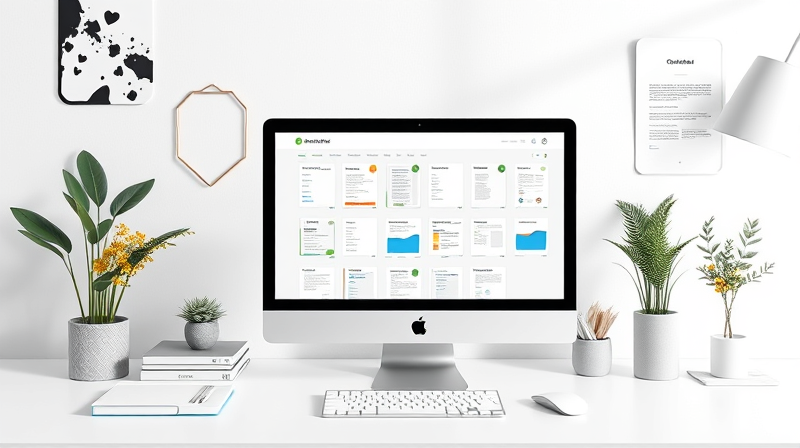The digital era is evolving at an unprecedented pace, and with it comes both opportunities and challenges. We find ourselves embedded in a reality where work and personal life intermingle due to constant connectivity. In this fast-paced environment, achieving a tech-life balance is not just about managing tasks, but also about nurturing our well-being. This article offers practical tips and inspiring ideas to navigate this ever-changing landscape.
Technology is a double-edged sword. On one hand, it streamlines communication and boosts productivity; on the other, it blurs the boundaries between professional and personal time. The rise of remote and hybrid work has redefined how we engage with our devices, often leading to an unintentional overlap of work and home life. Understanding these dynamics is crucial for preserving one's sanity in an always-on world.
Understanding the Impact of Constant Connectivity
The lure of being always connected can feel irresistible. A constant stream of emails, messages, and updates can turn our lives into a never-ending cycle of notifications. This digital bombardment is not without consequences. Studies indicate that the phenomenon of technostress has become a significant cause of burnout among employees. When technology invades the sanctuary of our personal space, it becomes challenging to switch off and recharge mentally.
Work-life balance is more than a catchphrase—it is a necessity. Nearly 94% of workers acknowledge that achieving balance is essential for both health and happiness. Yet, paradoxically, many of us struggle to implement the very practices that foster such balance. As our devices become extensions of ourselves, establishing healthy boundaries is a goal that requires deliberate planning and self-reflection.
Practical Tips for Tech-Life Balance
Maintaining a healthy relationship with technology involves intentional steps. Below are strategies that can help reclaim your time and mental space:
- Embrace Digital Mindfulness: This involves being acutely aware of when and how you use your devices. Instead of letting technology dictate your day, schedule specific time slots for checking emails and social media. Intentional digital detox periods can help reduce stress and allow for mental recovery.
- Set Clear Work Boundaries: Even in a work-from-home setting, establishing a designated workspace and fixed work hours is imperative. Communicate these boundaries clearly to colleagues and family members to minimize distractions and create a defined separation between work and relaxation.
- Leverage Flexible Arrangements: Modern workplaces often offer flexible scheduling options such as flextime, job sharing, or compressed workweeks. Embracing these alternatives not only boosts productivity but also enriches your personal life. Even a single day of remote work per month can enhance overall happiness and efficiency.
- Recognize Early Warning Signs: Be on the lookout for signs of burnout, such as persistent fatigue, irritability, or sleep disturbances. These early indicators should prompt you to reduce screen time and seek support, whether through professional help or personal adjustments.
- Prioritize Human Connection: Relying solely on digital communication can create feelings of isolation. Balancing your interactions with face-to-face or voice calls can significantly improve your emotional well-being. In an era defined by digital interactions, human connections serve as a vital reminder of what truly matters.
These tips are more than just a checklist—they represent a proactive approach to reclaiming control over your life. By integrating these practices into your daily routine, you set up a sustainable framework that nurtures both professional success and personal well-being. The journey toward tech-life balance begins with small, intentional steps that resonate over time.
In an unpredictable world where technology fuels progress and transforms lifestyles, it is crucial to continually re-evaluate our relationship with it. While digital tools can undoubtedly enhance our productivity and create new opportunities, they must be used mindfully. Your well-being is paramount. By taking control of your digital habits, you not only improve your immediate environment but also contribute to a healthier, more balanced future.
Moving forward, make a commitment to yourself. Allow your devices to serve as assistants rather than masters of your time. Incorporate moments of pause and reflection into your daily routine and remember that balance is a dynamic process—it requires ongoing adjustments and self-compassion.
This mindset is essential not just for personal health, but also for professional resilience. Organizations and leaders are increasingly recognizing that a balanced workforce is a more productive one. Employees who are given the freedom to disconnect are often more innovative and invested in their roles. By advocating for and practicing digital mindfulness, you play a pivotal role in shaping a healthier, more sustainable work culture.
Ultimately, achieving tech-life balance is an ongoing journey rather than a destination. Every small step you take creates a ripple effect that can lead to profound, lasting change. Embrace the power of intentionality and let mindfulness guide your relationship with technology. In this ever-evolving digital world, your commitment to balance will serve as an anchor, preserving your well-being and ensuring that both work and life flourish harmoniously.








